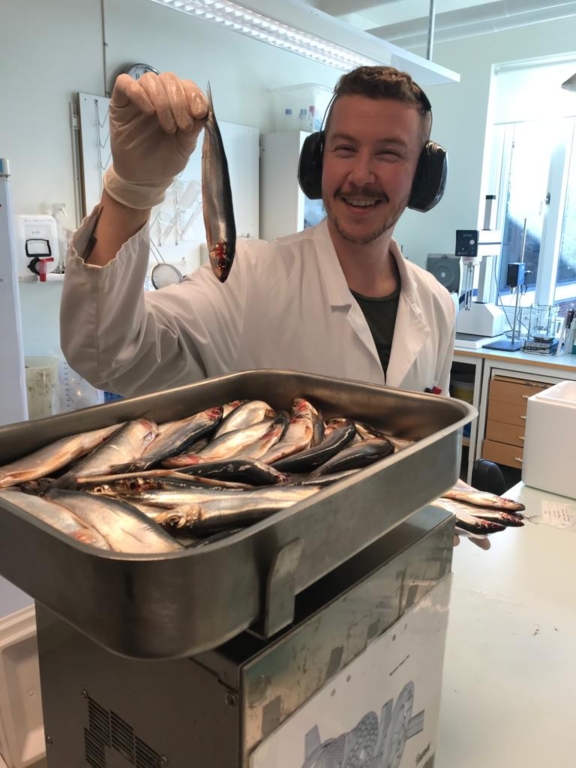"Valorization of whole/gutted small herring and sprat into protein-enriched ingredients"
On the way from fishing boat to fish counter, much of the catch takes other routes. As much as 90% of the small pelagic fish, such as herring and sprat, go directly to the production of fishmeal and fish oil to be used as feed for fish and other animals. But even of the fish intended for food, much is lost along the way. The reason is that the fish are too small or that procedures are not currently in place to use all the fish meat Blue Food PhD student John Axelsson's goal is to turn more fish into food.

Parts of today's fish industry are technologically advanced. The catch is pumped from the boat into an automated factory where the fish are sorted, conveyed on a conveyor belt, gutted and filleted, before being further processed or packaged. The staff's role in the process is to monitor that everything is working properly. But the smallest fish - which do not fit into the machines - are sorted out. And even on the filleted fish, there is still meat that could be used.
John Axelsson will test two methods for recovering the herring protein that is not currently used for food. The first is called the pH shift method and involves mixing the fish with water and - by adjusting the pH value - dissolving the protein, separating it from bones, skin and some of the oil, and then precipitating it at a different pH in a purer form.
The result is a concentrated protein ingredient that can be used in food production," says John Axelsson. The second technique is to use a so-called mechanical meat-bone separator where the fish is pressed against a rotating drum with holes to separate the meat from the bones. The result is a boneless fish mince.
As a first step, John Axelsson will investigate which method has the greatest potential to be used for the small herring, depending on whether the whole fish is used or variants where only the head is removed, or where the head and intestines are removed.
More rosemary and algae, less PCBs and dioxins
The next step in John Axelsson's project is to improve sustainability with antioxidants. He will build on previous experiments with rosemary extract, algae and press cakes from juice production. Introducing the right type of antioxidant increases the shelf life and usability of the protein ingredients or minced meat, something that can otherwise be a problem in so-called "dark" fish, which is rich in the heme protein hemoglobin.
The third step is to remove unwanted substances. Herring from the Baltic Sea can contain varying levels of PCBs and dioxins that can be harmful to humans. These substances are fat-soluble and bioaccumulate through the food chain. But there are possible technologies to remove them. Previous research at Chalmers has shown that 70-80 % can be removed by the pH shift process. These results could be refined, for example by adding more fat-soluble substances. The disadvantage is that some omega-3 is also lost, so there is a trade-off between removing unwanted substances but not losing too many benefits.
Food from 3D printers in the future
Once the other steps are completed, John Axelsson will experiment with 3D printers for food.
It is about adapting the protein ingredients or minced meat to a printable consistency and ensuring that the printed food keeps its shape.
In this work - and also in other parts of the project - John Axelsson looks forward to collaborating with Blue Food and Chalmers colleague Mar Vall-Llosera, whose focus is on algae, which could be used as antioxidants or to influence the taste and texture of the finished products.
The project is particularly relevant to research area 2: Process technologies and product development.
Supervisors
Ingrid Undeland, Chalmers
Assistant supervisor
Mehdi Abdollahi, Chalmers
Friederike Ziegler, RISE
Martin Kuhlin, Sweden Pelagic
John Axelsson's profile page on chalmers.se (in English)